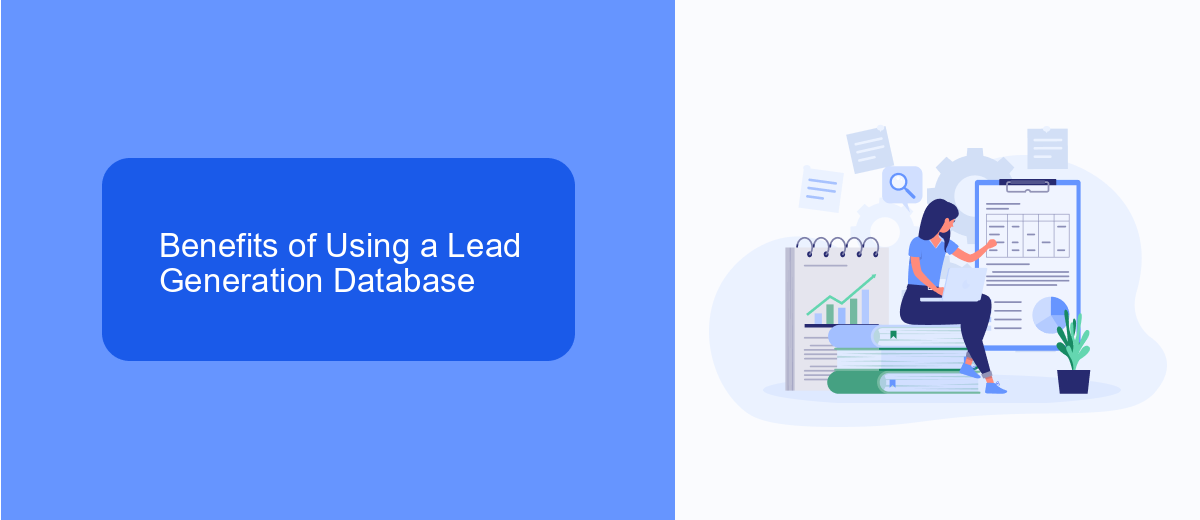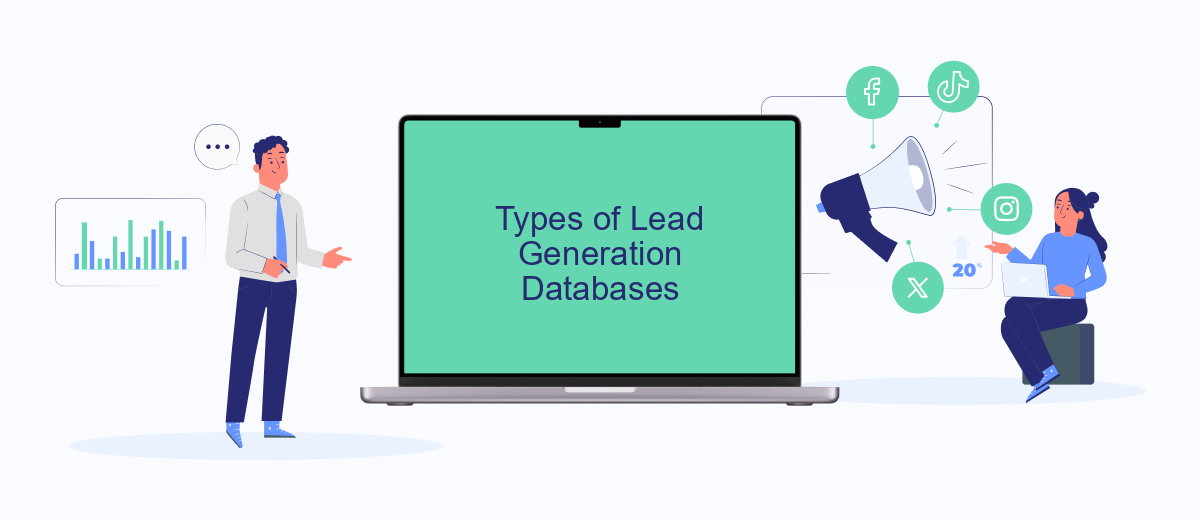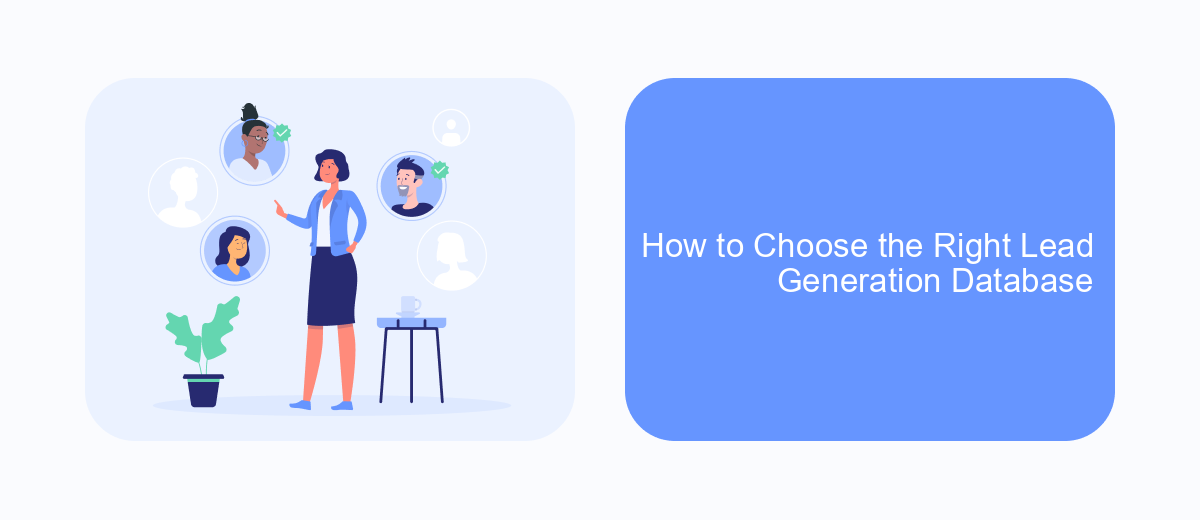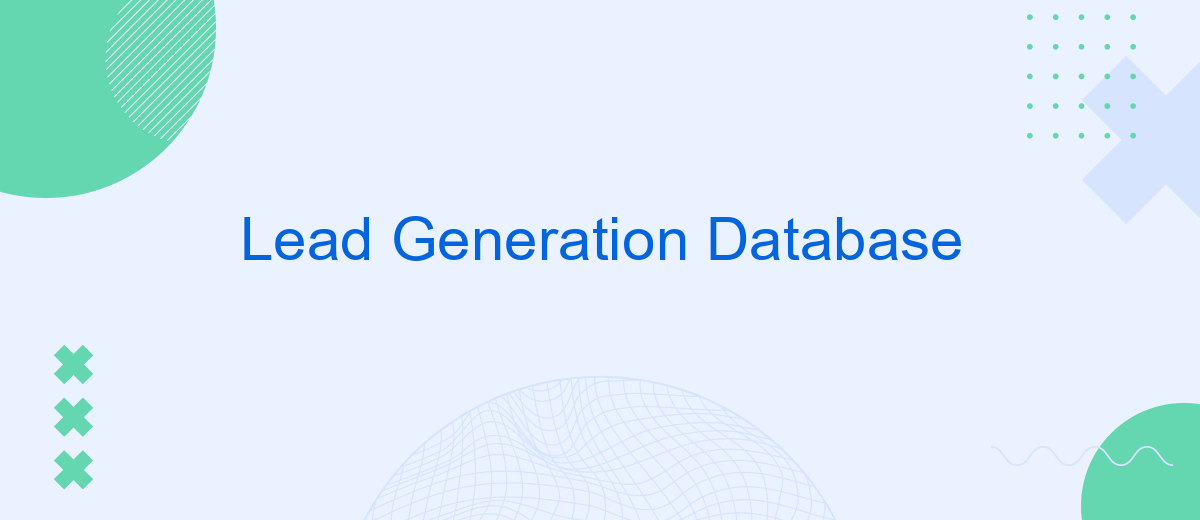In today's competitive business landscape, an effective lead generation database is crucial for driving growth and maximizing sales potential. By systematically organizing and managing potential customer information, businesses can streamline their marketing efforts, enhance customer engagement, and ultimately boost conversion rates. This article delves into the key components and best practices for creating a robust lead generation database that delivers measurable results.
What is a Lead Generation Database?
A Lead Generation Database is a centralized repository designed to collect, store, and manage information about potential customers or leads. This database is crucial for businesses looking to streamline their marketing and sales efforts by keeping track of interactions with prospects and identifying opportunities for engagement.
- Contact Information: Names, email addresses, phone numbers, and company details.
- Lead Scoring: Metrics to assess the potential value of each lead.
- Interaction History: Records of communications, meetings, and follow-ups.
- Source Tracking: Information on how and where the lead was generated.
Integrating a Lead Generation Database with other tools and platforms can significantly enhance its effectiveness. Services like SaveMyLeads can automate the process of transferring data from various sources into your database, ensuring that your lead information is always up-to-date and accurate. By leveraging such integrations, businesses can focus more on nurturing leads and closing deals rather than managing data manually.
Benefits of Using a Lead Generation Database

Using a lead generation database offers numerous benefits for businesses. One of the primary advantages is the ability to streamline and automate the collection of potential customer information. This not only saves time but also ensures that the data is accurate and up-to-date. By leveraging a well-maintained database, companies can target their marketing efforts more effectively, reaching out to leads who are more likely to convert into paying customers. Moreover, the database allows for better segmentation, enabling personalized communication strategies that resonate with different customer groups.
Additionally, integrating a lead generation database with other tools and platforms can further enhance its effectiveness. For instance, services like SaveMyLeads facilitate seamless integration with various CRM systems, email marketing platforms, and other business applications. This ensures that lead data flows smoothly across different channels, providing a unified view of customer interactions. As a result, businesses can make more informed decisions, optimize their marketing campaigns, and ultimately drive higher conversion rates. The automation capabilities also reduce manual work, allowing teams to focus on more strategic tasks and improving overall productivity.
Types of Lead Generation Databases

Lead generation databases are essential tools for businesses aiming to capture and manage potential customer information. These databases come in various forms, each tailored to specific needs and strategies.
- CRM Databases: These databases store detailed information about leads and customers, helping businesses track interactions and manage relationships effectively.
- Email Marketing Databases: Focused on collecting email addresses and related data, these databases support targeted email campaigns to nurture leads.
- Social Media Databases: Collects data from social media platforms, allowing businesses to understand and engage with their audience on social networks.
- Integrated Lead Databases: Tools like SaveMyLeads help integrate various data sources, ensuring a seamless flow of lead information across different platforms.
Each type of lead generation database serves a unique purpose and can be used in combination to create a comprehensive lead management system. By leveraging these databases, businesses can streamline their lead generation processes and improve conversion rates.
How to Choose the Right Lead Generation Database

Choosing the right lead generation database is crucial for the success of your marketing and sales efforts. The right database will help you identify and target potential customers effectively, ensuring that your campaigns yield the best results. To make an informed decision, consider several key factors.
First, evaluate the quality and accuracy of the data provided. A reliable database should offer up-to-date and comprehensive information about your target audience. Additionally, consider the ease of integration with your existing CRM and marketing tools. This will streamline your workflow and enhance efficiency.
- Data accuracy and quality
- Ease of integration with CRM and marketing tools
- Customization options
- Cost and value for money
- Customer support and training
For seamless integration, consider using services like SaveMyLeads, which can automate the data transfer between your lead generation database and other tools. This will save time and reduce the risk of errors. By carefully assessing these factors, you can select a lead generation database that aligns with your business needs and drives growth.
Using SaveMyLeads to Integrate with Your Database
Integrating your lead generation database with various marketing tools can be a complex task, but using SaveMyLeads simplifies the process significantly. SaveMyLeads is a powerful service that automates the transfer of leads from your lead generation forms to your database, ensuring that you never miss out on potential clients. By configuring SaveMyLeads, you can set up automated workflows that capture leads from platforms like Facebook and Google, and seamlessly integrate them into your CRM or any other database you use.
To get started, simply sign up for an account on SaveMyLeads, and follow the straightforward setup process. You'll be able to create custom workflows that map specific fields from your lead generation forms to corresponding fields in your database. This not only saves time but also reduces the risk of manual errors. With SaveMyLeads, you can ensure that your lead data is always up-to-date and accessible, enabling your sales and marketing teams to act swiftly and efficiently.
FAQ
What is a Lead Generation Database?
Why is a Lead Generation Database important for businesses?
How can I ensure the quality of leads in my database?
What are the best practices for maintaining a Lead Generation Database?
How can I automate the process of updating my Lead Generation Database?
Personalized responses to new clients from Facebook/Instagram. Receiving data on new orders in real time. Prompt delivery of information to all employees who are involved in lead processing. All this can be done automatically. With the SaveMyLeads service, you will be able to easily create integrations for Facebook Lead Ads and implement automation. Set up the integration once and let it do the chores every day.
